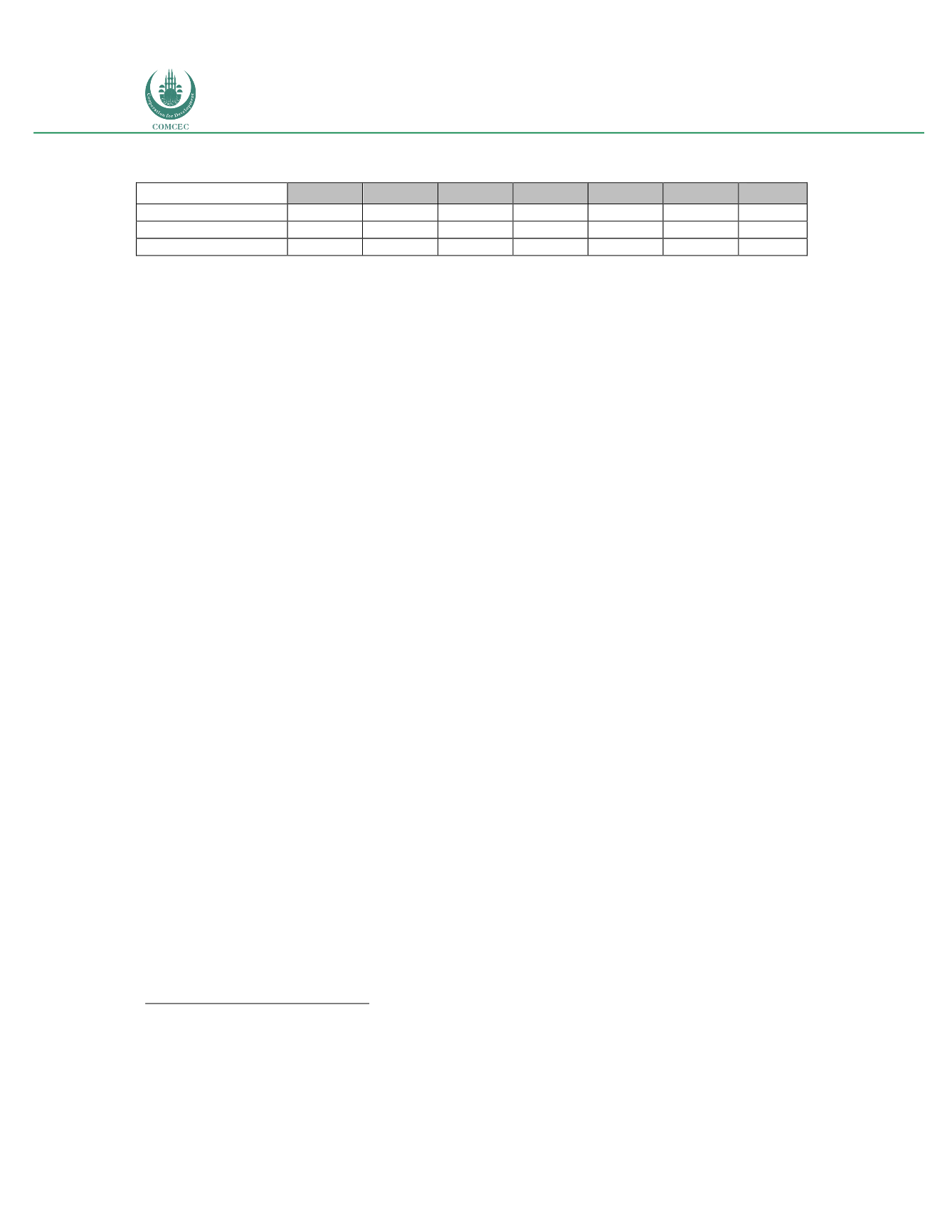

Increasing Broadband Internet Penetration
In the OIC Member Countries
124
Table 61: Saudi Arabia: Mobile broadband demand gap (%)
2010
2011
2012
2013
2014
2015 2Q2016
Service coverage
90.00
93.80
95.08
97.00
97.00
97.00 97.00
Percent Population
9.7
39.6
42.1
47.6
94.5
105.9
83.5
Demand gap
80.3
54.2
52.98
49.4
2.5
0 (*)
13.5
(*) When the demand gap calculation is negative, it is assumed that there are no barriers to adoption.
Sources: GSMA Intelligence; Telecom Advisory Services analysis
Table 61 also illustrates the dynamics between mobile broadband coverage and adoption in a
country where adoption is not supply constrained. Saudi Arabia very rapidly achieved a high
level of population coverage, which enabled over time a diffusion process that was essentially
completed by 2014: a demand gap of 13.5% would indicate that barriers for mobile broadband
adoption are fairly low. This estimate is fairly close to the results of a survey conducted by the
Saudi regulator on ICT usage in the Kingdom
70
. According to that study, only 9% of all survey
respondents aged between 12 and 65 years old were found to be non-users of the Internet.
What are the reasons explaining non-adoption of broadband? First and foremost, the survey
data indicates that affordability does not appear to be a significant barrier. Based on the
calculation of the digitization index in 2014, Saudi Arabia scored in 2014 a
telecommunications affordability index of 94.83
71
. This index reflects in the aggregate the total
cost of ownership of telecommunications services (including taxes) as a function of income. In
fact, when compared with the rest of the OIC Member Countries, Saudi Arabia is at the top-end
of the affordability range (see figure 37).
70
Op.cit. p. 20.
71
The digital affordability index is a composite index calculated on the basis of six indicators: Residential fixed line tariff
adjusted for GDP per capita; Residential fixed line connection fee adjusted for GDP per capita; Mobile cellular prepaid tariff
adjusted for GDP/capita; Mobile cellular prepaid connection fee adjusted for GDP per capita; fixed broadband Internet
access cost adjusted for GDP per capita; mobile broadband Internet access cost adjusted for GDP per capita (see Katz and
Koutroumpis, 2014).
















